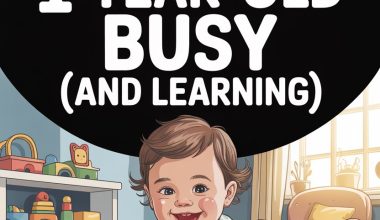When your little darling turns into a one-kid firework show at the drop of a hat, “keep calm and carry on” sounds about as realistic as “just pop out for a yoga class.”
Your nerves are fried, every dinner feels like a negotiation with a tiny dictator, and even the dog has started hiding under the bed.
Teachers, though—those wizards with their glue sticks and magic stickers—often manage to keep their classes relatively calm, even with a kid or two who could out-shout a foghorn.
Here’s how you can borrow a few of their best tricks and try them at home. No need for a whistle or a lanyard.
1. The Power of Predictable Routines
Ever notice how schools run like clockwork? There’s a reason for that.
Kids—especially those who erupt faster than a shaken Fanta—find comfort in knowing what’s coming next. Unpredictable transitions are prime time for meltdowns.
Teachers build their days around rituals: morning greetings, lining up the same way, snack at 10:15 sharp. Psychologists highlight that routines lower anxiety for explosive children by offering a sense of control and safety.
At home, this doesn’t mean you need a classroom bell (though wouldn’t that be fun?). Think more along the lines of mini routines for tricky moments.
Bring in a visual timetable. A simple chart with pictures (get the child to help make it) saying “Breakfast / Get Dressed / Play Time / Lunch / Screen Time / Bath / Bed.”
When your child knows what’s up next, that wild energy doesn’t get funneled into a panic attack about, say, brushing teeth.
For major transitions (“We need to leave for Nana’s in 10 minutes”), try a five-minute warning with a timer. When the timer beeps, the routine kicks in. It’s not magic, but it’s shockingly effective.
Some parents resist routines, fearing they’ll squash spontaneity. The good news? Spontaneity lives in the gaps between predictable moments.
When your child feels grounded by routine, they’re free to enjoy surprises—the good kind.
2. The Calm Down Toolkit
If you’ve ever witnessed a teacher in the eye of a classroom storm, you’ll see someone who rarely matches the child’s volume or energy. Instead, they go low and slow.
This isn’t accidental; research shows that adult calmness can actually help regulate a dysregulated child’s nervous system.
At home, having a calm down toolkit ready can mean the difference between a 10-minute thunderstorm and a full afternoon of emotional mayhem. The trick? Make it engaging, not punitive.
In schools, you’ll find “calm corners” with soft cushions, sensory toys, colouring books, and sometimes even a stuffed animal or two. The point is to offer a safe place to feel big feelings, not a naughty step in disguise.
Build your own kit with your child’s input. Fidget toys, stress balls, a weighted lap cushion, or even just a basket of picture books can work wonders.
Some families use an app like Moshi for guided meditations or music. For young kids, bubbles or a pinwheel can help them practise slow breathing (tell them to “blow the biggest bubble/pinwheel you can!”).
The most important ingredient? Consistency. Offer the calm down space before the explosion, not just after.
If you spot warning signs—clenched fists, raised voice, that twitchy “about to blow” look—nudge them gently: “Looks like you need your chill-out basket. Want me to come with you?”
3. Catch the Good Stuff
Here’s an open secret from every seasoned teacher: positive attention for managing big feelings is more powerful than scolding the outbursts.
It’s tempting to focus on stopping the tantrum, but putting the spotlight on the moments when your child is holding it together—no matter how small—can shift the entire dynamic over time.
Behavioural scientists call this “catching them being good,” and it’s the most efficient tool in the teacher’s kit. Your child quietly puts away their coat instead of launching it at the dog? Beam with pride, make a fuss, maybe even whip out a sticker chart.
The trick is to name the behaviour clearly: “I saw how you took a breath when you were mad—that was smart.” This helps your child know exactly what worked, rather than feeling lost in a sea of don’ts.
Some parents worry this will feel fake or over-the-top.
In reality, most kids double down on behaviours that get the most airtime. If your attention is all about the meltdown, guess what repeats? (Hint: it’s not the calm.) Teachers hand out “caught you being kind” notes for a reason—they work.
Try jotting a quick note for your child’s lunchbox, or sending a text to your partner about a success your child had that morning. Even a big hug at the right moment can reinforce the calm.
Gratitude jars and sticker charts are classics, but even a whispered “I’m really proud of you for keeping your cool” can work wonders. If praise feels awkward, try asking: “Did you notice how you calmed down quicker today?”
Sometimes a little self-reflection is the biggest reward.
When the Fireworks Are Just Too Big
Even the best teacher tricks can’t stop every meltdown. That’s not a parenting fail—it’s human.
Some days, your child’s emotions will be too big, the routine won’t stick, the calm down basket gets hurled across the room.
If outbursts are getting more intense or frequent, or you’re feeling out of your depth, don’t hesitate to ask for help. Some children need extra support, whether from a paediatrician, therapist, or specialist in behaviour.
Resources like the Child Mind Institute’s parenting guides can be a lifeline.
Above all, keep reminding yourself: your child isn’t bad or broken, and neither are you. Explosive kids are often deeply sensitive, creative, and loving, once their inner storm clouds pass.
Take a Teacher’s Night Off
Borrowing tricks from the classroom doesn’t mean your home needs to look or sound like a school. What matters is consistency, connection, and a big pinch of humour (plus a stash of emergency chocolate for the grown-ups).
Routines, calm down spaces, and positive attention aren’t just for teachers—they’re tools for anyone brave enough to parent an explosive child.
Some nights will end with tears, and that’s alright. Other nights, you’ll watch your child pull off a tiny victory and feel like you just won the glittery teacher-of-the-year mug.
And if all else fails? There’s always tomorrow’s school run.





